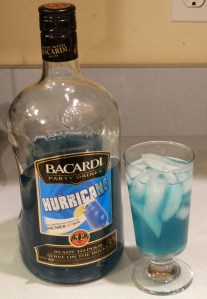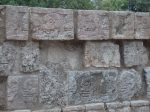
As Hurricane Irene swirled past my island home off the North Atlantic coast this weekend, my thoughts turned to another island over fourteen hundred miles south of New York. As the wind and rain attacked, littering lawns, roads, and pools with branches and leaves, I thought of that island’s turbulent past–its history drawing me as much as its tropical climate. For Irene’s last hurrah to us, she demolished a mature oak lining our street. The tree’s fifty foot trunk lay across our front yard and unlucky car like a mast of an old-time ship laid flat by unforeseen dangers. Again, I was reminded of the island I view as my second home.
In 1513, explorer Ponce de Leon claimed La Florida for Spain. Indian tribes were scattered across the tiny islands that fan out from the mainland peninsula. Spanish control of the region, now known as the Florida Keys, was ineffectual to say the least. The island farthest west in the chain, known as Cayo Hueso, or Key West, was also one of the wildest, with feuding tribes whose battles left bones of its victims to bleach on the sandy shore. This is how the island earned the nicknames Skull Island and Bone Key. Eventually, the indians were pushed out by Spanish settlers focused on agriculture. The waters held hidden perils for Spanish ships transporting cargo between Havana, Cuba and Key West farms in the form of coral reefs seven miles offshore as well as rogue ships captained by infamous pirates–such as Blackbeard and Captain Kid. This era of life on the high seas during the 1600-1700s has often been romanticized in literature and movies, like the popular “Pirates of the Caribbean” titles.
When Florida joined the United States in 1819, Key West was sold to American businessman John Simonton for two thousand dollars. He divided the island into quarters and split it with colleagues Greene, Whitehead, and Fleming. Simonton then convinced higher-ups within the United States government the southernmost point of the United States would make an excellent naval base. The formidable United States Navy made quick work of the piracy problem. However, clever residents soon made wrecking a profitable business, and Key West became the richest city in America by 1830. It retained that status for approximately twenty years.
Treasure hunters are modern-day pirates, legally plundering sunken ships for their cargo. Anyone who has seen “Titanic” knows what I mean. Mel Fisher was one such person. I find it no coincidence the Mel Fisher Maritime Museum is hosting a piracy exhibit through June 2012. We plan to bike on over to 200 Greene Street to explore all that pirate booty during our next getaway this autumn. For now, I’ll happily settle for cuddling on the couch with my honey to watch our favorite adventure movie. He’s enjoying some grog, of course, a recipe shown on Pirate Soul’s website:
PIRATE’S GROG
* 2oz Light Rum
* 1oz Spiced Rum
* 2tbsp Amaretto
* 2tbsp Grenadine
* 1tsp Lime Juice
* 1tsp Lemon Juice
* Combine ingredients with ice in cocktail shaker and shake well
* Strain into an old-fashioned glass and garnish with a twist
 And me? I’m enjoying a Hurricane. My sister-in-law introduced me to this simple yet delicious beverage the evening after our family’s brush with Irene. I was suspicious, having a bad experience with the other by the same name. The color convinced me to give it a try, and I liked its light sweetness–perfect over ice. I also think it’s a good option when the power’s out or you’re away from that kitchen blender. Hurricane Warning: Sip or else it may blow you over!
And me? I’m enjoying a Hurricane. My sister-in-law introduced me to this simple yet delicious beverage the evening after our family’s brush with Irene. I was suspicious, having a bad experience with the other by the same name. The color convinced me to give it a try, and I liked its light sweetness–perfect over ice. I also think it’s a good option when the power’s out or you’re away from that kitchen blender. Hurricane Warning: Sip or else it may blow you over!
What’s your recipe for restoring calm after a harrowing experience?






